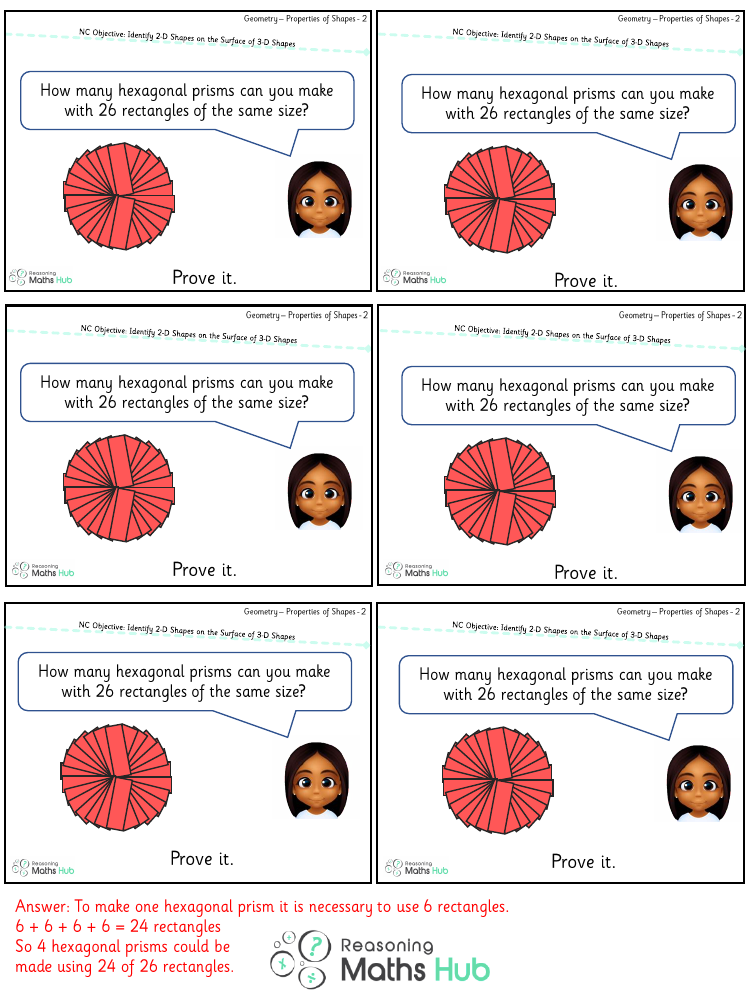Identify 2d shapes on the surface of 3d shapes 6 - Reasoning

Maths Resource Description
The task of identifying 2D shapes on the surface of 3D shapes requires students to apply their knowledge of geometry to recognise and name the flat faces, or 'faces', that make up the surface area of three-dimensional objects. This skill is essential for developing spatial awareness and understanding how different shapes can be combined to form more complex structures. In a typical activity, students might be presented with a variety of 3D shapes such as cubes, cylinders, cones, and pyramids, and asked to analyse each one to determine the 2D shapes that are present on their surfaces, such as squares, rectangles, circles, and triangles.
Reasoning tasks in this context encourage students to think critically and explain their thought processes. They might be asked to justify why a certain face of a 3D shape is, for example, a rectangle and not a square, or to discuss the properties that make a face a circle. These reasoning activities help students to deepen their understanding of the relationship between 2D and 3D shapes and to reinforce their knowledge of geometric vocabulary and properties. It also enhances their ability to visualise and manipulate shapes in their minds, an important skill in both mathematics and real-world applications.
